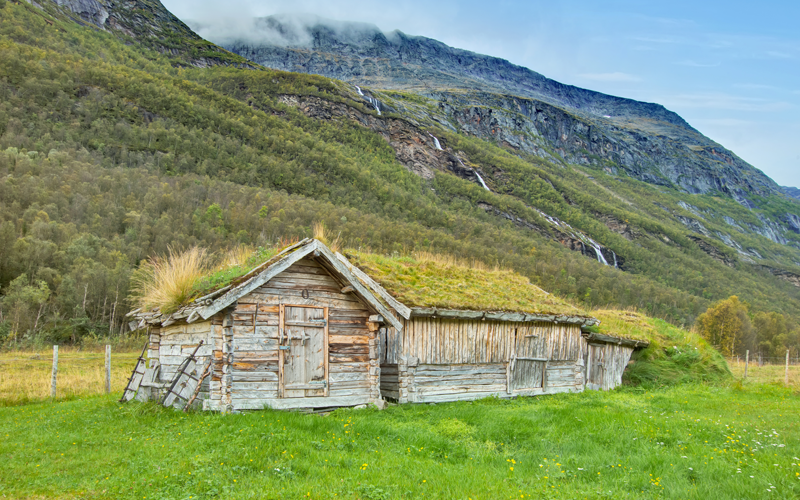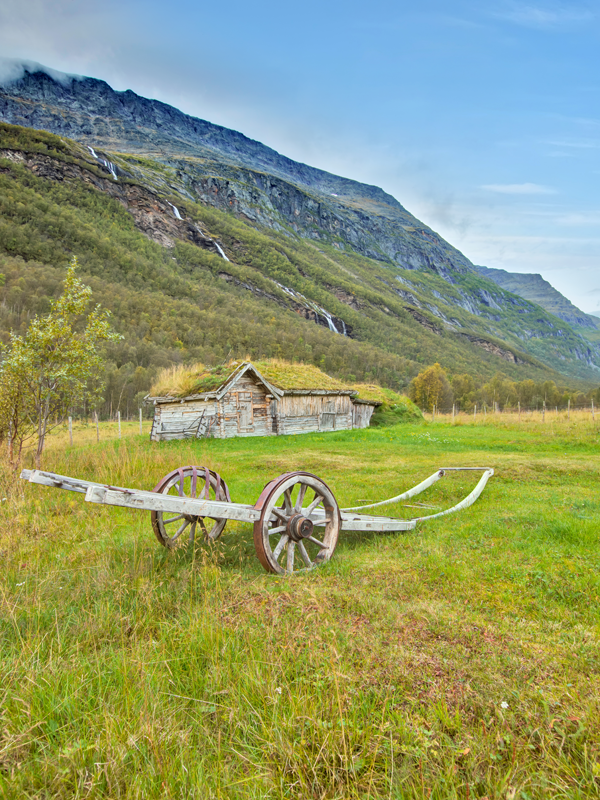Holmenes sjøsamiske gård

Holmenes Sea Sami farm is the museums historical site in Kåfjord municipality. It is situated in the inner most part of the Kåfjord.
The Sea Sami culture were exposed to strong pressure from the Norwegian authorities to become Norwegian(The Norweginisation). Despite this both the Sea Sami way of life and language has survived in Kåfjord. Today the culture has evolved and has new and modern ways of expressing itsef, for instance the Riddu Riđđu festival. At Holmenes you can learn about how a Sea Sami family lived in the time before 1940 and the contrasts between then and now.
About the farm.
The farm is from about 1850 and was in active use until 1964. Holmenes is a good example of a typical Sea Sami farm in North Troms. Archeological findings in the area show that there have been settlements here long before the farm was built.
The farm consists of a main house, woodshed, storage sheds, a well, a stable, a haybarn, a gamme cowshed, and a summer cowshed. The farms area is about 12 acres, and they were cleared with and run by horse. All the buildings today are either restored or reconstructed, and the farm as shown is as close to as it was in the 1930s as possible. By the fjord there are several small sea sheds, and one of them belongs to the farm. These were used to store fishing equipment and other household equipment.
The running of the farm was based on using nature to get what they needed to survive, using the farms cleared lands, the uncultivated lands close by and the forests and the sea. This is typical of the Sea Sami way of life. Because of this way of life, the Sea Sami often settled in lush valleys with broadleaved woods.
In the uncultivated lands the “forest fields” were used after the main hayfields were harvested in the middle of July. The hay was stooked and driven home to the farm. Both the hayfields and forest fields had to feed 2 cows, 8-10 sheep and a horse. The forest also yielded the wood needed for building and the fire.
By the fjord in Birtavarre, Holmenes has its own sea shed, which show the farms connection to the sea. There fishing equipment were kept.
The food was made from what the farm and surrounding nature could provide. In addion to meat, fish and dairy products, they foraged for berries and herbs used in both cooking and medicine.
How to get there
To get there turn off the E6 in Birtavarre. Follow the signs to Holmenes, the turn off is about 4 kilometres along the road in the valley.
At Holmen brigde take a right turn and follow the road until you reach the parking lot. Holmenes will be on your left hand side.
At most, 14 people lived at the farm. In daily life the housewife had responsibility for the family and the farm. Activities like separating cream from milk, churning butter, making cheese, plant dyeing wool, making soap and making rope were normal daily activities. The children had to participate in the work as soon as they were old enough. The men were fishermen and had to join the large fishing seasons at Lofoten and in Finnmark. The men also provided important sustenance through fishing locally and hunting.
The women were skilled crafters, and some of the traditional crafts practised historically still survive today, for instance making komager(the typical sea sami shoe) or weaving the Manndalsgrene, a special woolen blanket used for both bedclothes and by the Reindeerherding Sami as teltcloth. The grene was an important trading commodity at the market in Skibotn with knitted items lingonberries.
At Holmenes you can see how a Sea Sami family lived in the time before the second world war. At the annual market day held every July, you can eat traditional food, the children can try old games. This day also includes demonstrations of traditional crafts like plant dyeing, felting and weaving.
Just north of Birtavarre, by the E6, you find the sea sheds. In total there are 28 sheds, 8 of which are from the 19th century. Seven of there are together and one of these belong to Holmenes. The sheds by the sea and the farm in the valley show how the Sea Sami harvested from nature, in forest, in cultivating the land, and in gathering resources from the sea.




